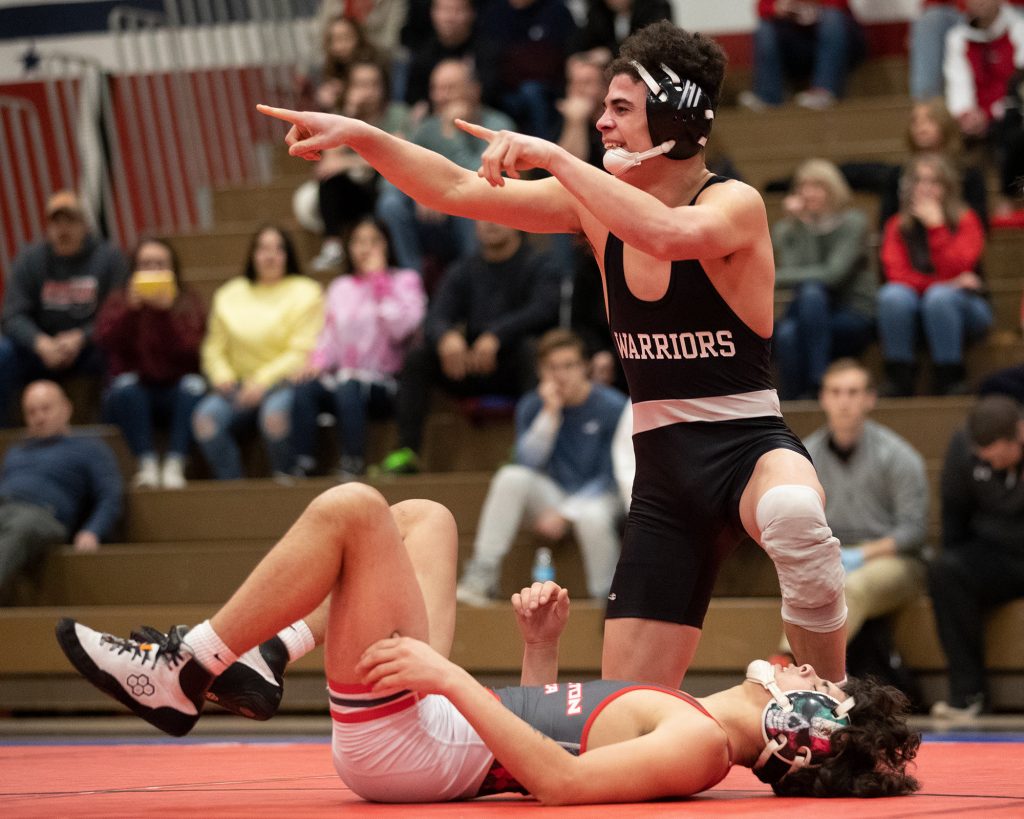Despite a petition with thousands of signatures opposing it, the reduction of high school wrestling weight classes moved closer to ratification Monday.
The Pennsylvania Interscholastic Athletic Association Board of Directors unanimously passed the proposed change from 14 to 13 weight classes on a second reading. It needs to pass through a third reading before it goes into effect for the 2020-21 season.
Before the vote, attorneys Richard Sandow and Anthony Plastino and Pennsylvania Athletic Trainers’ Society past-president George Roberts expressed concerns about the health and safety of athletes, promotion of the sport and timing of the change. They represent a group of individuals that opposes the change in weight classes.
“My clients are willing to put resources and finances into working with (the PIAA) in some kind of a task force in a way to involve and get the support of the whole community,” Sandow said during the teleconference board meeting. “There doesn’t seem to be any necessity to do this at this time.”
They also cited the “Deny PIAA’s Weight Class Reduction Proposal — Decreases Opportunities & Endangers Wrestlers” petition on change.org.
“In less than a month, more than 11,000 members of the Pennsylvania wrestling community have not just signed it, but we have 900 to 1,000 detailed comments about why the wrestling community in general is against this change which is occurring at this time,” Sandow said.
The three, who consulted doctors before their appeal, raised concerns about cutting and gaining weight, specifically without the 182-pound weight class. The proposal would change the 170, 182, 195 and 220 weight classes to 172, 189 and 215. An athlete wrestling at 182 pounds last season would have to either cut 10 pounds or gain seven in order to compete at the varsity level.
The Times-Tribune’s last two Wrestlers of the Year, Delaware Valley’s Jason Henderson (2020) and West Scranton’s Jeremy Seymour (2019), competed at 195 and 182 pounds, respectively, during their award-winning seasons.
“This adds a level of stress into the certification of weights,” Roberts said.
The three also said the change would happen too close to the season and the uncertainty of the effect the coronavirus pandemic could have on the upcoming high school sports seasons would add more stress for the wrestlers.
“I don’t think anybody has the crystal ball to predict whether we’re going to be able to participate this coming fall,” Roberts said. “Decisions are going to have to be made, things are going to have to be modified and there is a lot of pressure on our coaches and athletes to get ready for the upcoming season.”
They also pointed out no other state has made this change, which could affect scholarship opportunities and chances to compete for a high school varsity squad.
“I am not in favor of cutting the weight class,” Delaware Valley coach Lou DeLauro said. “I don’t like taking opportunities away from a kid. Kids want to wrestle varsity and that’s an opportunity that’s going to be eliminated if it happens. I just don’t think it’s good for the sport.
“Also, we are the only state that is even considering it. A lot of teams wrestle out of state teams as well as out of state tournaments that just creates issues in those situations when tournaments and other out of state duals would have different weights.”

CHRISTOPHER DOLAN / STAFF PHOTOGRAPHER
Delaware Valley’s Preston Machado reacts after pinning Hazleton Area’s Oscar Zamudio in a 132-pound match at the District 2 Class 3A wrestling dual championship at Pittston Area High School on Saturday, Feb. 1, 2020. Delaware Valley coach Lou DeLauro said recently he is not in favor of cutting a wrestling weight class: “I don’t like taking opportunities away from a kid. Kids want to wrestle varsity and that’s an opportunity that’s going to be eliminated if it happens. I just don’t think it’s good for the sport.”
DeLauro wasn’t the only Lackawanna League coach against the change.
“I don’t like the changes at all,” Wallenpaupack coach Steve Krushnowski said. “I’ve never heard of increasing participation by eliminating opportunity, which is what this is doing. The state coaches association fought hard for quite a while to increase the state tournament participants from 16 to 20 per weight class. This was a great step for the sport. Now, we have given back 40 state slots between 2A and 3A. It’s a shame 40 kids will not get the opportunity to represent their respective school at the biggest, best state tournament in the U.S.
“I also do not think the state waited long enough to see if changes, such as multiple entries per weight class in some tournaments, would have an effect on overall participation.”
Reasons for the proposed change include decrease in forfeits, a minimal disruption to the current 14 weight classes still recognized by the National Federation of State High School Associations and the greater ease to break ties in a dual meet.
Lackawanna Trail coach Keith Youtz doesn’t believe the change would help with forfeits.
“I would like to keep the weight classes the same as last year,” Youtz said. “For dual meets, coaches will still forfeit to help the team get a win.”
Despite the opposition the PIAA board passed the second reading unanimously. Approval of the first reading passed the proposal to the Sports Medicine Advisory Committee, which also heard Sandow’s appeal earlier this month. The committee said the change was not a health and safety issue and voted unanimously to support the recommendation to change the number of weight classes. That’s what the board was looking for to send it to the third reading, which will happen at its next meeting July 14-15.
The proposal, supported by data from the National Wrestling Coaches Association, was originally approved by the PIAA steering committee April 29.
District 11 chairman Bob Hartman said athletes still have the opportunity to wrestle at the JV level. PIAA executive director Robert Lombardi also pointed out the collegiate level only has 10 weight classes.
“I don’t see the diminished of scholarships because even with 13 (weight classes) we’re still higher than 10,” Lombardi said.
Related posts:




